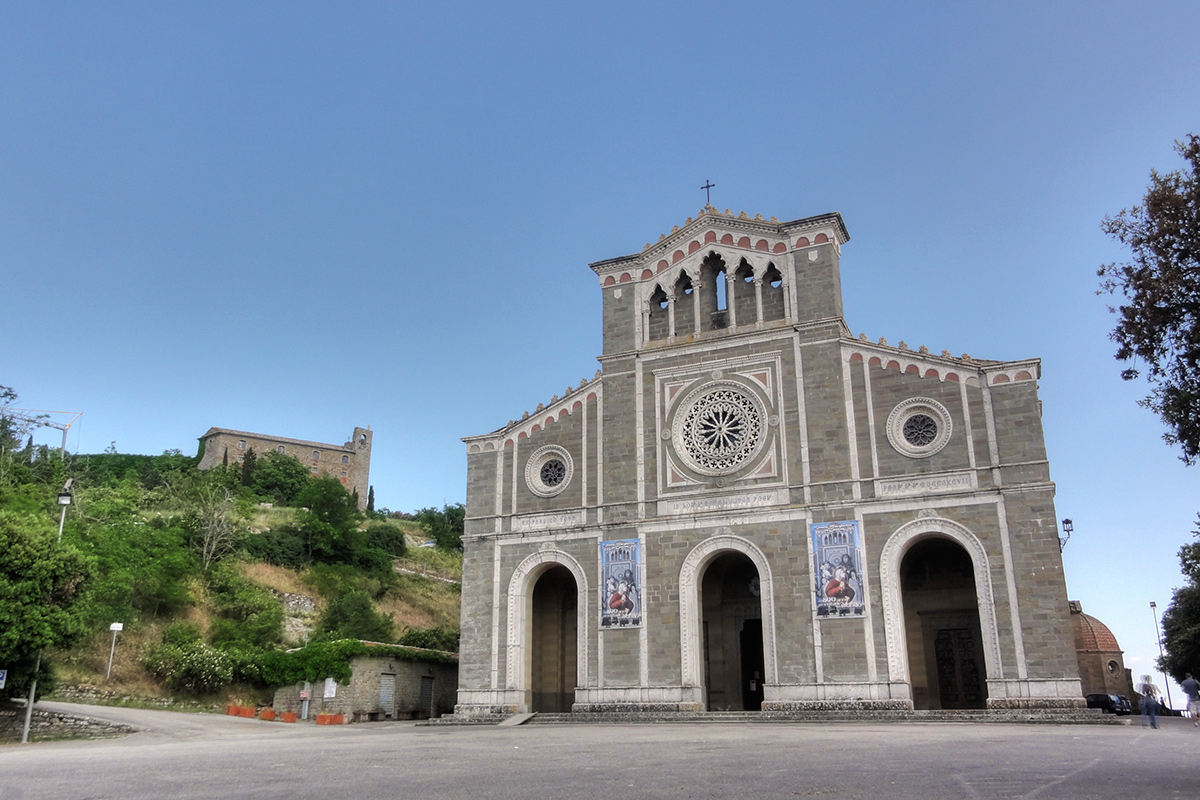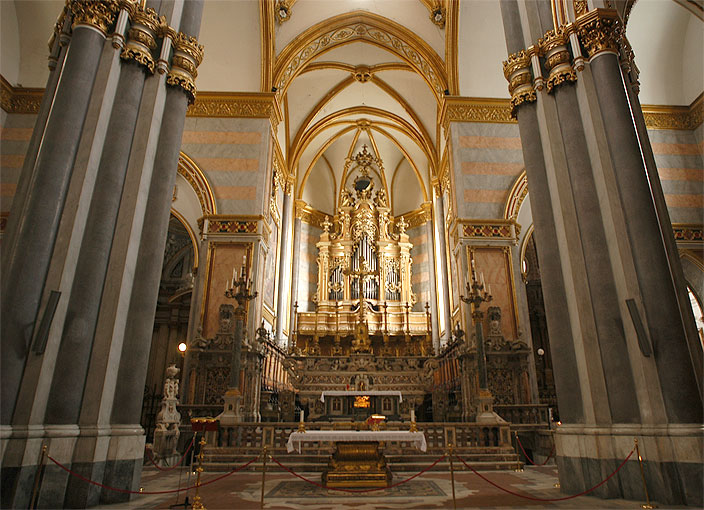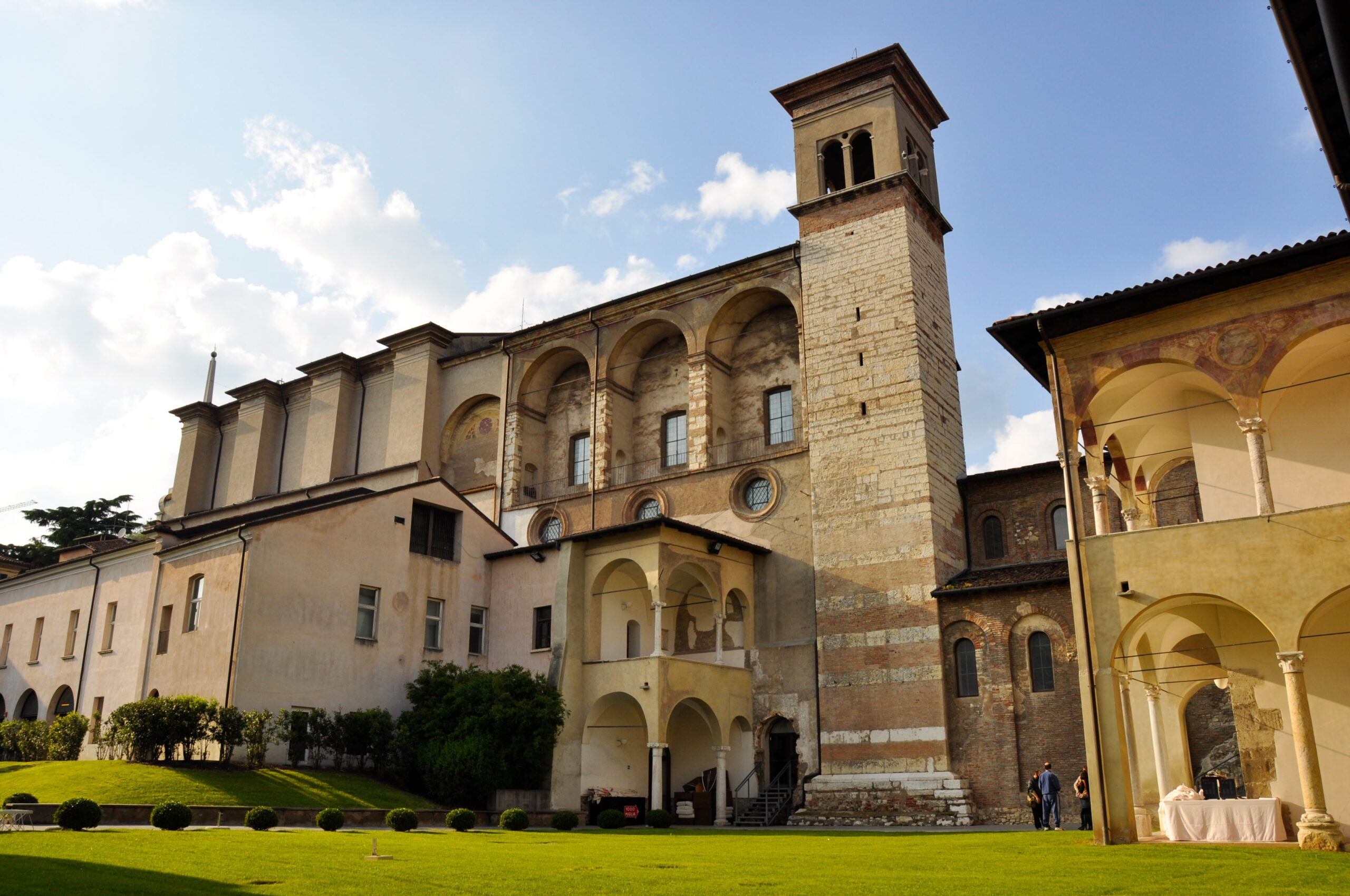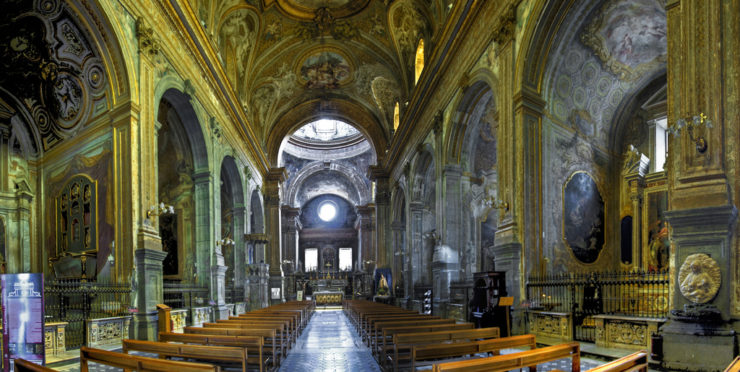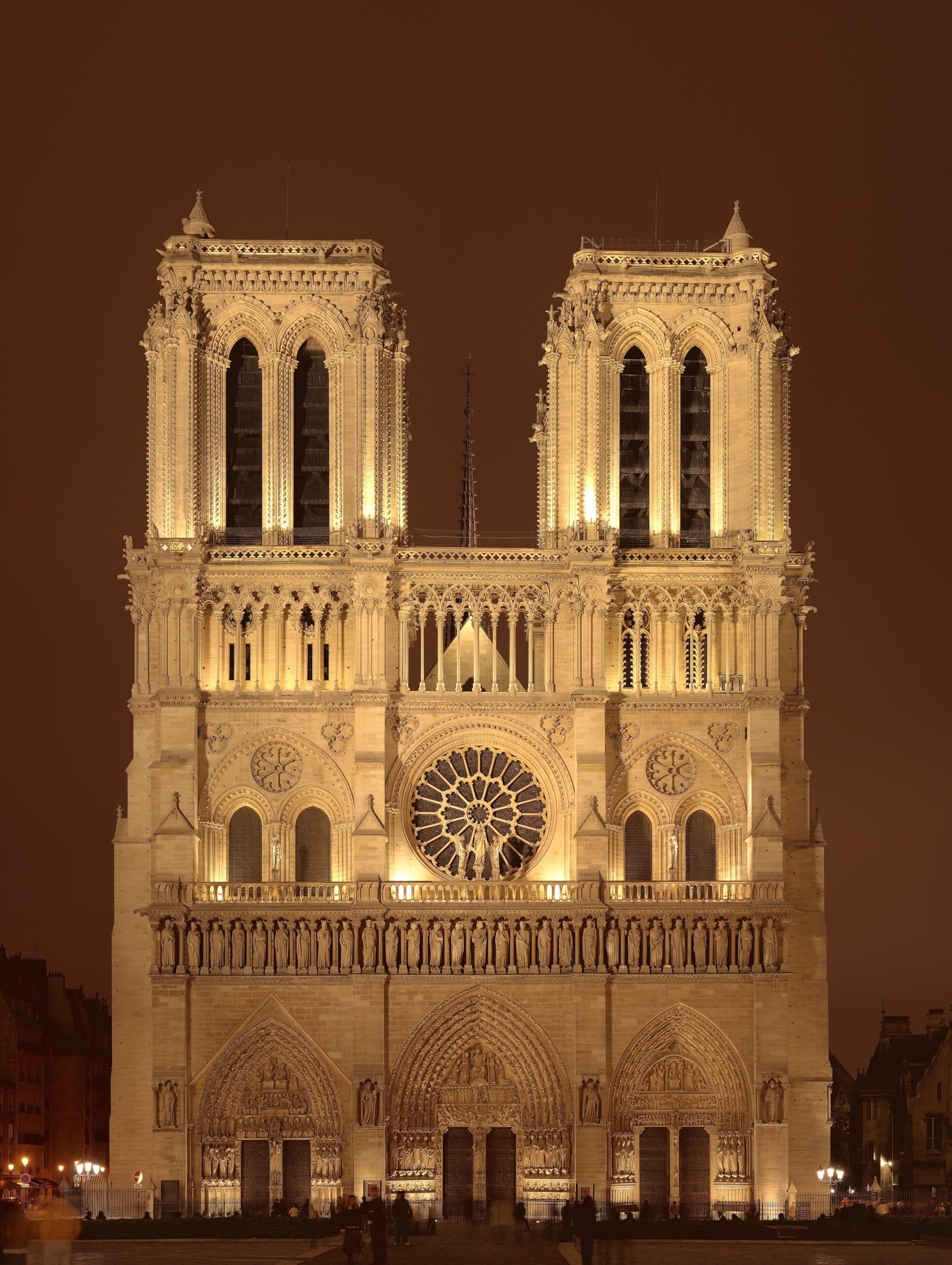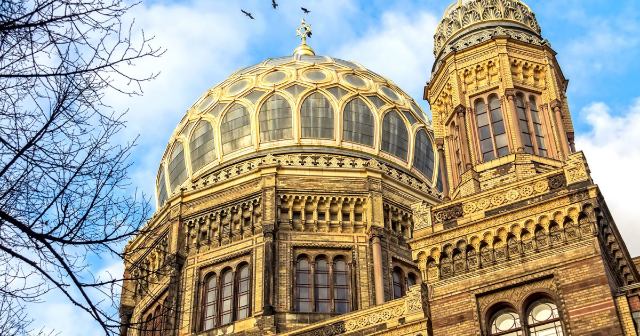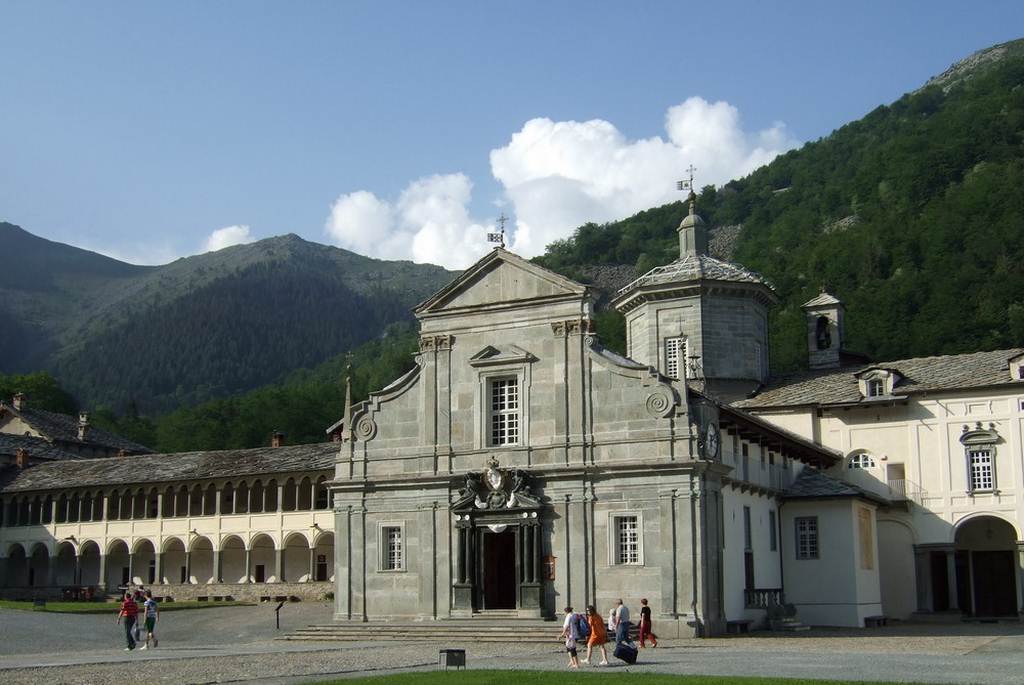The church rises at the top of the hill in an enchanting position. On the site of the present church there was a small church built by the Camaldolese monks in the 11th century and dedicated to St. Basil. The church was damaged during the Sack of Cortona in 1258 and rebuilt in 1288 by Santa Margherita and dedicated to St. Basil, St. Egidio monk and St. Catherine of Alexandria. Santa Margherita, in a room at the back of this church lived the last years of her life and died there in 1297. She was buried in the church of St. Basil. Immediately after the death of Margherita, the people of Cortona, next to the church, built a larger church designed by Giovanni Pisano and in 1330 they moved the body of the Saint. Of the fourteenth-century building remain only the rose window on the facade, the bell tower and the outer walls of the choir. Throughout the fourteenth century the church continued to be embellished with important frescoes. Only a few fragments of this mural cycle have come down to us, preserved in the Diocesan Museum, but there is evidence of it in a 17th century codex that documents with twenty-one watercolour scenes the mural paintings lost in 1653 when, due to their poor state of preservation, they were faded out. Analysis of the surviving fragments leads us to date them to around 1335 and attribute them to the workshop of one or both of the Lorenzetti brothers. In 1385 the church was entrusted to the Olivetan monks, who were replaced in 1389 by the Minor Observants who still take care of it and welcome visitors.
The church underwent successive transformations in modern times, of which the seventeenth-century altars remain, but the most important transformation, although it has completely disappeared, was the one ordered in the mid-1800s by John V, King of Portugal, who had received a grace from the Saint.
The present church is instead the result of the 19th century reconstruction, entrusted first to the architect Enrico Presenti, who replaced the original single-nave plan with a basilica structure, then to the architect Mariano Falcini, who finished the sacred building without satisfying the Cortonese. Therefore, in 1896 the architect Giuseppe Castellucci was commissioned to redo the façade, which bears the fourteenth-century rose window of the ancient demolished church. In August 1927, it was elevated to the dignity of a minor basilica. In the chapel of the left transept there is the fourteenth-century marble sepulchral monument of Saint Margherita; the venerated remains rest in the silver urn (1646) on the high altar.
